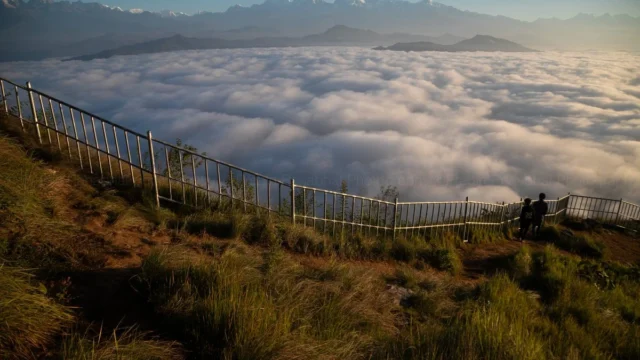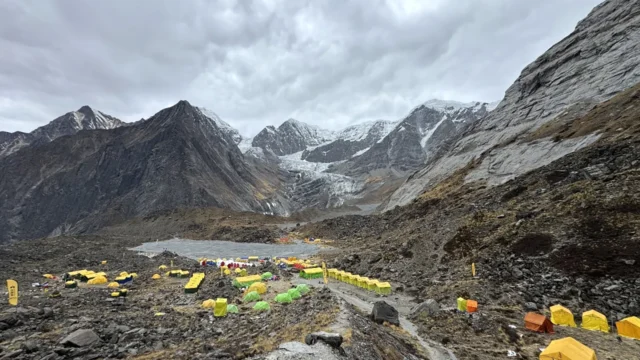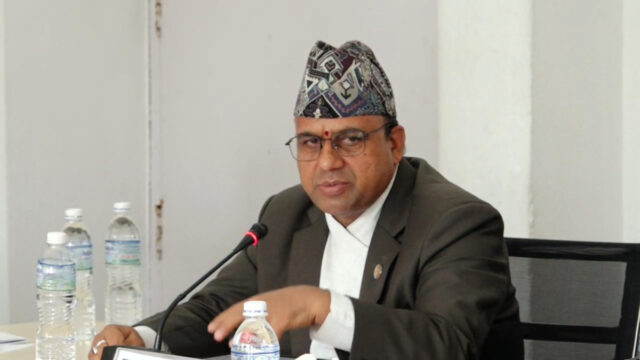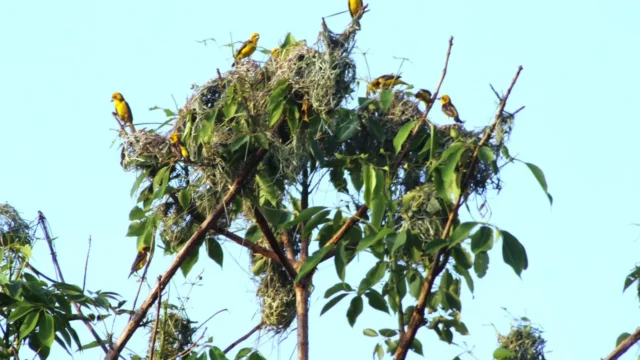Mudka (Manika) Lake, a religious and tourist site in Shuklaphanta Municipality-8, is gradually filling up due to soil, stones, and sand carried by streams from the Chure hills. Despite efforts to build protective walls with donor support, the lake is shrinking by about a meter annually.
The shrinking of the lake, despite protective wall construction, highlights the urgency of finding sustainable solutions. The combination of natural forces, water management issues, and climate change is contributing to the rapid reduction in the lake’s size. With the current rate of shrinkage, the impact on local ecosystems and communities could be devastating. As efforts to protect the lake continue, more comprehensive strategies are required to prevent further loss and ensure its preservation for future generations.
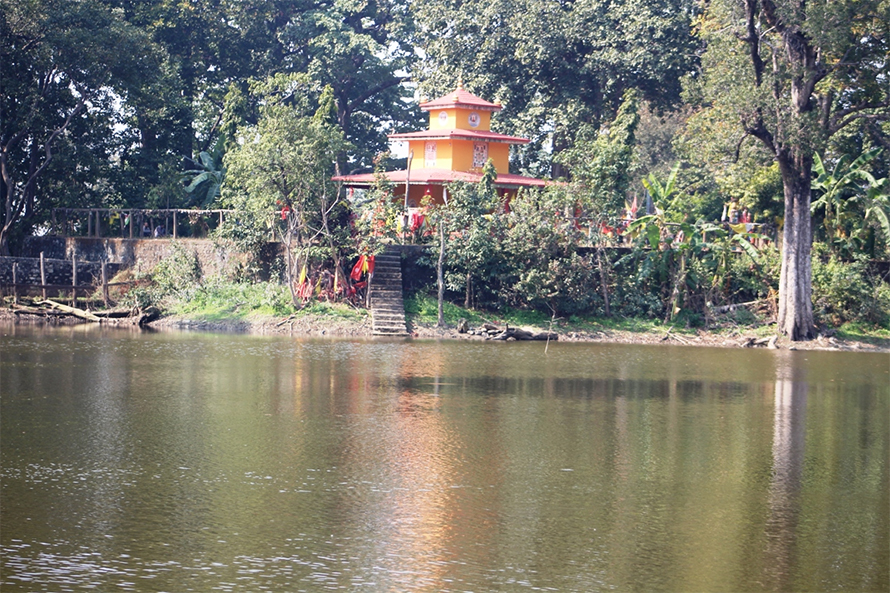
Over half of the three-bigha lake has already been filled, significantly reducing its size. Due to financial limitations, efforts to clean and restore the lake have been hindered, leaving the situation unresolved. As the water levels continue to drop, vegetation has started to thrive in the areas that have dried up, further contributing to the lake’s degradation. During periods of extreme heat, the lake’s water levels have dropped significantly, exacerbating the drying process. Without sufficient resources for restoration, the lake’s future is in jeopardy, and its environmental impact is becoming increasingly evident.
Efforts to establish boring systems for the water supply and to remove the accumulated debris in Mudka Lake have come to a halt, primarily due to insufficient funding. These critical measures were aimed at restoring the lake’s ecosystem and ensuring a sustainable water supply for the surrounding communities.
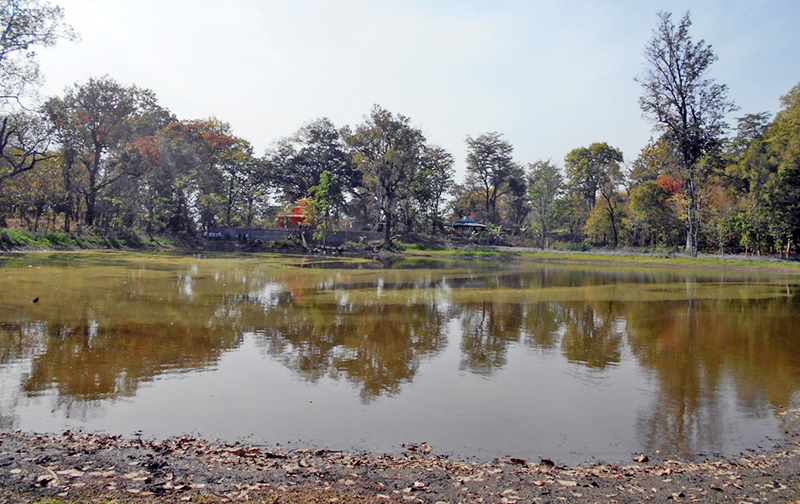
However, the lack of financial support has significantly delayed the progress of these projects, leaving the lake in a state of neglect. The situation has raised alarms among local environmental groups and residents, as the lake’s overall health is deteriorating due to the absence of necessary interventions.
Adding to the concerns, the local administration has yet to take any proactive steps toward the conservation of the lake. The absence of a comprehensive management plan or any concrete actions to address the environmental challenges facing Mudka Lake has led to growing anxiety among stakeholders.
The ecosystem, which supports various species such as fish and turtles, is at risk. Without urgent attention, the delicate balance of aquatic life in the lake could be disrupted, further harming biodiversity. This inaction is putting the lake’s long-term survival in jeopardy, making it imperative for authorities to step up and prioritize conservation efforts.
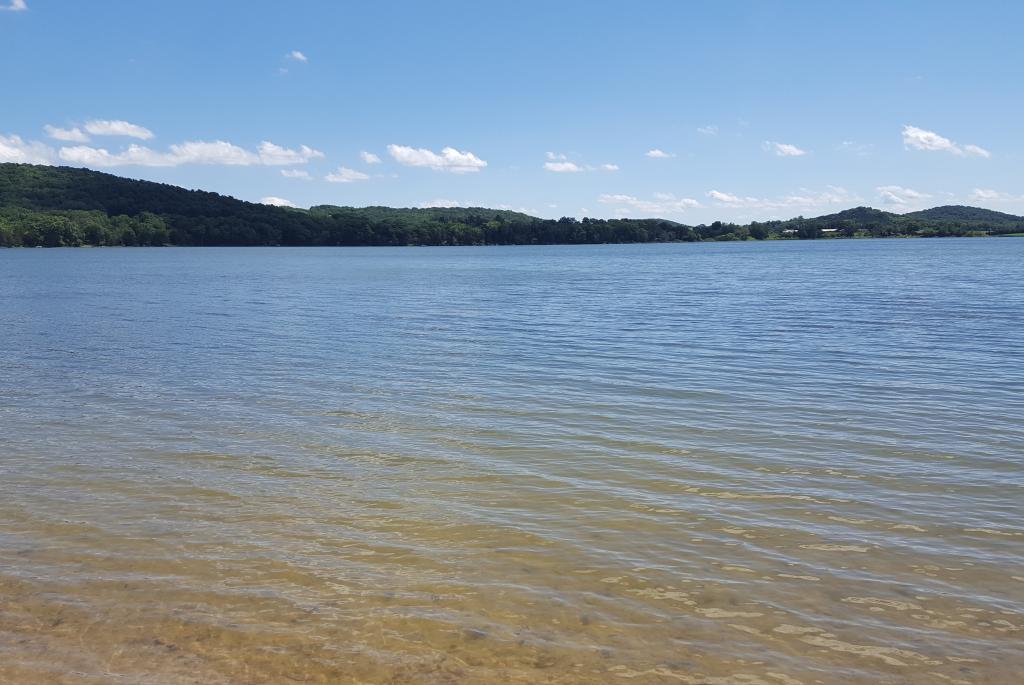
The mudka lake is home to migratory birds like jaleva and ducks and has cultural significance due to its association with a mythical serpent. Historically, the area served as a shelter for migrating herders and has since developed into a religious site, attracting pilgrims, especially during an annual fair in the month of Falgun.
In addition to its ecological importance, Mudka Lake has historical relevance, having once served as a shelter for migrating herders seeking refuge in the region. Over time, the area has evolved into a prominent religious site, drawing pilgrims and devotees, particularly during the annual fair held in the month of Falgun. This cultural tradition continues to attract visitors, who come to honor the lake’s spiritual history and its association with local myths and customs. Mudka Lake remains a blend of nature, history, and culture, symbolizing both the natural beauty and the rich heritage of the region.

The Nepal Tourism Board has extended its support towards the construction of the temple, and the federal government has allocated NPR 20 million for the development of a Dharamshala (pilgrim rest house). Despite this funding, the site continues to lack basic facilities that are crucial for the comfort and convenience of visitors.
The situation is further complicated by the absence of essential amenities such as toilets, electricity, and drinking water. Water supply issues remain unresolved due to blocked pipes, hindering the efforts to provide adequate services to pilgrims and tourists at the site.

